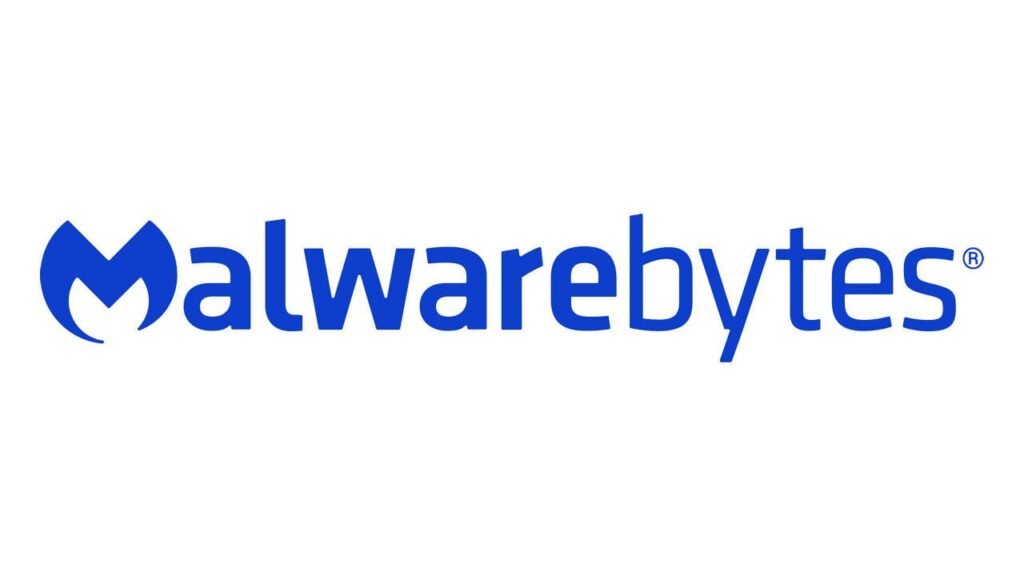Did you know that nearly 50% of organizations have experienced a ransomware attack in the last year alone? This staggering statistic underscores the urgent need for effective ransomware attack recovery strategies. As every second counts when you're faced with the potential loss of critical data, understanding how to recover encrypted files is essential for safeguarding your valuable information. Notably, a majority of users who have fallen victim report significant challenges during recovery attempts, making it clear that having a robust plan is paramount. Our goal here is to guide you through the various methods available to facilitate data recovery after ransomware while avoiding the common pitfall of paying cybercriminals for access to your files1.
Key Takeaways
- • Almost half of organizations face ransomware attacks each year.
- • Understanding recovery options is crucial to protecting your data.
- • Always have a plan that does not involve paying the ransom.
- • Different tools and strategies exist for recovering encrypted files.
- • Regular backups can serve as your first line of defense.
- • Knowing how to clean your system is essential for recovery.
Understanding Ransomware Attacks
Ransomware attacks are a growing threat that can severely disrupt your operations. They are fueled by complex ransomware mechanics, which encompass various techniques that attackers utilize to gain access to systems and hold data hostage for financial gain. Understanding the definition of ransomware is critical in navigating these challenges.
Definition of Ransomware
Ransomware is a type of malware encryption that locks users out of their files, rendering important data inaccessible. Victims typically face demands for payment to regain access, leading to significant implications for both individuals and organizations. In fact, the average cost of a ransomware attack was $4.54 million in 2022, according to IBM research2.
How Ransomware Works
Ransomware often infiltrates systems through phishing emails or by exploiting unpatched vulnerabilities in software. Once inside, it may encrypt files or even entire systems, making recovery challenging without proper measures in place. Statistics reveal that 59% of organizations experienced a ransomware attack in 2023, with many facing demands upwards of $1 million3. Furthermore, 94% of attackers attempted to compromise backups, leading to increased pressures on businesses3.
Implementing both technical and behavioral strategies, such as enabling two-factor authentication, is recommended to bolster defenses against these attacks2.
For more information on protecting your data, visit this resource.
The Importance of a Ransomware Recovery Plan
Implementing a comprehensive ransomware recovery plan is critical for any organization today. With ransomware attacks affecting 66% of organizations in 2023, the importance of a recovery plan cannot be overstated4. Without an effective strategy, businesses may face extended downtime and potential permanent data loss, severely disrupting operations4. Developing a well-structured recovery plan helps organizations swiftly isolate infected systems, stop the ransomware's spread, and initiate the recovery process. This swift action minimizes customer dissatisfaction and internal disruptions, thereby safeguarding reputation and revenue5.
Why You Need a Recovery Plan
Organizations without a robust recovery strategy are at significant risk. Financial costs associated with ransomware incidents are substantial, with the average cost reaching $1.85 million in 20235. Not having a recovery plan might lead to reputational damage, lost business, and regulatory fines4. A solid recovery plan covers compliance with legal regulations and integrates incident response plans, which is essential to navigate post-attack scenarios effectively. This proactive approach enables businesses to limit the financial impact and accelerate recovery efforts following an attack5.
Components of an Effective Recovery Plan
An effective ransomware recovery plan comprises several key components. Here are five essential elements to consider:
- • Regular data backups, ideally following the 3-2-1 rule to ensure data availability.
- • An incident response plan that outlines immediate actions to take after a ransomware attack.
- • A comprehensive business continuity plan to maintain operations during recovery.
- • Clear data recovery procedures detailing how to restore critical data and systems.
- • Post-incident analysis to enhance defenses against future attacks4.
Implementing these components will not only protect your organization but will also empower you to respond effectively, ensuring you can recover quickly after a ransomware incident5.
How to Recover Files After a Ransomware Attack
After experiencing a ransomware attack, swift action is essential for minimizing damage and enhancing your chances of recovery. Implementing immediate recovery steps can significantly influence the outcome as you manage the aftermath of such an incident. Start by disconnecting the infected systems from your network to halt further spread of the ransomware. Gather crucial log data for analysis, as it will help in understanding the attack vector and enhancing your future defenses.
Immediate Steps to Take
Taking the right immediate recovery steps can streamline your recovery process. Here’s what you should consider:
- • Backup and secure essential files if not already done.
- • Engage with a team of cybersecurity professionals who can guide you through the recovery process6.
- • Consider utilizing immutable file systems that facilitate quick restoration to the latest clean state6.
- • Review your current security protocols to close any vulnerabilities that may have been exploited by the ransomware1.
Options for File Restoration
When it comes to data restoration options, several avenues exist for recovering your files.
- 1. Implement the 3-2-1 backup strategy, which means having three copies of your data, stored in two different formats, with one offsite or offline7.
- 2. Evaluate using data recovery software like Stellar Recovery or Disk Drill that can assist with repairing partitions and retrieving lost data1.
- 3. Consider using decryption tools that are tailored for specific ransomware strains1. However, not all ransomware versions have reliable decryptor tools available7.
- 4. Examine the feasibility of restoring from system backups. Note that using Windows System Restore may not be effective for modern ransomware as it can disable such recovery features7.
The completion time for data recovery can vary significantly—ranging from days to months. This variable is influenced by the extent of the corrupted data and the efficiency of your chosen recovery methods7. Skilled system administrators with predefined disaster recovery plans can dramatically reduce this recovery time7.
Backups: Your First Line of Defense
In the face of increasing ransomware threats, establishing a solid backup strategy serves as your best line of defense. Data backups protect your critical files, allowing for recovery in the event of an attack. Effective planning involves assessing the importance of your data and selecting reliable backup solutions that suit your needs. These solutions can range from cloud storage to local hard drives, depending on your preferences and requirements.
Creating Reliable Backups
Consistent and secure data backups are vital in safeguarding against ransomware. Research indicates that hackers target backup repositories 75% of the time, highlighting the need for an effective backup strategy8. To enhance security, implement the 3-2-1-1-0 rule: maintain three copies of your data, on two different media, with one copy stored offsite, and one backup that is immutable, ensuring it cannot be altered or deleted.
Testing Your Backup Solutions
Regular backup testing is crucial to ensure your solutions operate seamlessly when disaster strikes. Without frequent testing, you risk encountering failures that can leave your data vulnerable during a ransomware attack. Monitoring your systems adds an extra layer of security, as 85% of organizations experienced at least one cyberattack in the preceding year, and the effectiveness of your recovery strategies heavily relies on your data protection processes8. By prioritizing backup integrity, you fortify your defenses against evolving threats in the digital landscape.
Using Data Recovery Software
When facing data loss due to a ransomware attack, utilizing data recovery software may become essential. This software can be a valuable ally in attempting to restore your important files. Several popular tools have emerged as trusted options for users, but understanding their capabilities and limitations is crucial.
Popular Data Recovery Tools
Among the most recognized data recovery software options are:
- • EaseUS Data Recovery Wizard: Lauded for its impressive 99.7% recovery rate and a Trustpilot rating of 4.8, this tool excels in retrieving lost files efficiently9.
- • Stellar Recovery: Known for its comprehensive features, Stellar offers various options tailored for different data loss scenarios.
- • Disk Drill: A user-friendly tool that provides a range of data recovery features, making it suitable for both novice and experienced users.
Limitations of Data Recovery Software
While data recovery software can aid in restoring lost files, it is essential to recognize the software limitations. In many cases, the success of data recovery depends on factors such as the type of ransomware and the condition of your storage devices. Newer ransomware variants can pose significant challenges, making it difficult for software to recover data effectively. The estimated recovery time from ransomware attacks often ranges from about an hour to three weeks10.
For complex recoveries, especially for businesses, it may be advisable to engage professional services like Ontrack, which has been a recognized data recovery specialist since 198511. They offer around-the-clock support and employ specialized tools designed for intricate recoveries.
Decryption Tools: Can They Help?
When you find yourself facing the aftermath of a ransomware attack, one of the most pressing questions is whether decryption tools can assist you in recovering your valuable files. These specialized software solutions aim to unlock the files that have been encrypted by various ransomware strains, potentially avoiding the payment of hefty ransoms.
How Decryption Tools Work
Decryption tools operate by using algorithms to reverse the encryption applied by ransomware. They typically target specific variants, allowing you to restore encrypted files. It's essential to understand that not all ransomware has a known decryption solution. As ransomware continues to evolve, new strains emerge regularly, making it vital to stay updated on available decryption tools12.
Types of Decryption Tools Available
Several decryption tools are available to help victims of ransomware. Here’s a summary of some popular tools:
| Tool Name | Variants Supported | Free Availability |
|---|---|---|
| Kaspersky Ransomware Decryption Tools | Multiple strains | Free |
| Emsisoft | Cerber, WannaCry, and more | 84 free tools available |
| Avast | Various | 30 free tools available |
| Trend Micro | Crysis, WannaCry, etc. | 27 free tools |
| Quick Heal | Troldesh, Cryptxxx, etc. | 20 free tools |
| No More Ransom Project | Various | Free access |
| McAfee's Ransomware Recover (Mr2) | Framework for various tools | Free access |
| Wanakiwi | WannaCry | Free |
| WannaDecrypt | WannaCry, WCrypt, etc. | Free |

Understanding the different types of decryption tools and how they function could determine your success in recovering from a ransomware attack. As the landscape of ransomware continues to shift, having the right tools at your disposal can significantly impact your recovery efforts1213.
Utilizing Built-In Recovery Options
When faced with a ransomware attack, utilizing the built-in recovery options in Windows can provide valuable assistance. These options allow you to access useful tools designed to restore your system and retrieve files that may have been compromised. Two primary features to consider are System Restore and Windows File Versions.
Windows System Restore
The Windows System Restore feature is an essential tool that enables you to return your system to a previous state before the ransomware infection occurred. This means it can help revert system files to a version that was functioning normally, provided that a restore point was created prior to the attack. Understanding how to access and utilize this feature is crucial as it can shorten the recovery time significantly. It is important to note that the effectiveness of this option depends on proper setup, as overlooking restore point configurations could hinder recovery efforts14.
Windows File Versions
Another useful component of Windows recovery options is the File Version retrieval feature. This allows you to recover earlier versions of files that may have been altered or deleted during a ransomware attack. By right-clicking on a file and choosing the “Previous Versions” option, you can access and restore prior versions. This process can be particularly beneficial for retrieving crucial documents quickly and conveniently. Keep in mind that this method requires that File History or System Protection has been enabled beforehand14.
Cleaning Your Systems Before Recovery
Before diving into file recovery, you must prioritize cleaning your systems to ensure that all traces of ransomware are removed. Proper device infection identification is essential, as failing to clean infected systems can lead to re-encryption of data once you restore it. Additionally, implementing thorough system cleaning strategies lays a solid foundation for a successful recovery process.
Identifying Infected Devices
The first step involves detecting which devices are infected. According to the Cybersecurity and Infrastructure Security Agency (CISA), promptly isolating impacted systems can help prevent the spread of malware15. In some cases, shutting down devices that cannot be disconnected from the network is advisable to contain the outbreak15. Once identified, prioritize the devices critical for daily operations, as this significantly aids in effective incident management15.
Steps to Disinfect Your Systems
Disinfecting devices requires a systematic approach. Start with the following steps:
- 1. Isolate all identified infected devices immediately to limit any ongoing threats.
- 2. Utilize reliable antivirus software to scan and remove any malware.
- 3. Inspect backup systems to ensure that clean copies of your data remain protected.
- 4. Power down any devices that can’t be isolated individually, to stop the ransomware from spreading15.
- 5. Conduct thorough threat hunting to look for signs of precursory malware or any anomalous activities such as unexpected file modifications15.
Overall, successful system cleaning incorporates identifying infections comprehensively and taking decisive action to disinfect all affected devices before proceeding with data recovery efforts. This proactive approach minimizes the risk of re-infection, facilitating a smoother recovery process.

Implementing Cybersecurity Measures Post-Recovery
After recovering from a ransomware attack, it's vital to establish strong cybersecurity measures to prevent future incidents. With the increasing sophistication of cyber threats, enhancing security protocols is necessary to safeguard your systems effectively. Implementing a layered defense strategy can significantly bolster your post-recovery cybersecurity.
Enhancing Security Protocols
Implementing robust security enhancement measures includes deploying various tools such as antivirus software, firewalls, and intrusion detection systems. Each of these tools plays a crucial role in protecting against potential threats. Regularly reviewing and updating your security protocols is essential to stay ahead of cybercriminals.
Regular Monitoring and Updates
Establishing effective monitoring protocols ensures that any suspicious activities are detected and addressed promptly. Consistent updates to both software and security infrastructures are essential given that 66% of organizations fell victim to ransomware attacks in 2023, resulting in payments exceeding $1 billion16. Regular backups not only facilitate quick restoration of data but also serve as a critical component of a solid cybersecurity strategy. The average cost of IT downtime is about $5,600 per minute or $336,000 per hour, underscoring the financial impact of inadequate recovery strategies16.
| Cybersecurity Measures | Description | Benefits |
|---|---|---|
| Antivirus Software | Protects against malware and ransomware | Early threat detection and removal |
| Firewall | Filters traffic based on security rules | Blocks unauthorized access to systems |
| Intrusion Detection Systems | Monitors network or system activities for malicious activities | Real-time alerts and analysis |
| Regular Backups | Provides copies of data at specific intervals | Quick recovery from attacks |
Developing an effective cybersecurity strategy post-recovery can protect your organization from falling victim to another ransomware attack. Maintain awareness and continuously improve your defenses to navigate the complex cyber threat landscape17.
Emergency Protocol for Organizations
Organizations must implement tailored organizational emergency protocols to effectively handle ransomware incidents. A well-defined structure aids in responding swiftly and efficiently in the face of potential attacks. An incident response team is central to this process, comprising members from IT and other vital departments, ensuring cohesive recovery efforts.
Incident Response Team Roles
The incident response team plays a crucial role in managing crises involving ransomware. This team is responsible for:
- • Coordinating communication strategies among departments to ensure everyone is informed and aligned.
- • Establishing clear protocols for identifying and isolating affected systems quickly.
- • Engaging with external agencies when necessary, such as law enforcement or cybersecurity firms.
- • Documenting each step of the recovery process for future reference and improvement.
Statistics indicate ransomware attacks occur as often as once every eleven seconds, showcasing the need for a robust incident response team18. Within just a month, 50% of small businesses affected by these attacks reported becoming unprofitable, highlighting the importance of effective strategies19.
Communication Strategies During an Attack
Effective communication strategies are vital during a ransomware attack. Organizations should focus on:
- 1. Creating a crisis communication plan that designates spokespersons and outlines from whom information will flow.
- 2. Utilizing secure channels for internal and external communications to prevent information leaks.
- 3. Preparing timely updates for stakeholders and clients, detailing the situation and response measures in place.
Immediate response when faced with a ransomware attack includes steps to communicate securely, identify and isolate impacted systems, and report incidents internally18. As the average cost of a ransomware attack was reported to be $4.54 million, the significance of having established communication strategies cannot be overstated19.

Conclusion
In summary, implementing effective recovery strategies is vital for minimizing the impact of a ransomware attack on your organization. A solid recovery plan includes maintaining backups, utilizing recovery options, and performing thorough system cleaning. Following the 3-2-1 rule, which emphasizes the importance of planning by storing three copies of data on two different media types with one copy offsite, can significantly enhance your ransomware prevention efforts20.
It's crucial to recognize that human error remains a prominent factor in many successful ransomware attacks, highlighting the need for robust employee training on cybersecurity best practices21. By taking immediate steps—such as identifying the ransomware strain and disconnecting infected devices—you can effectively curb further damage20. Companies that invest in comprehensive ransomware protection solutions can navigate the treacherous landscape of data recovery with resilience, demonstrating that proactive planning is essential in today's cyber environment22.
Ultimately, the path to recovery involves a proactive stance: plan wisely, enhance your defenses, and respond swiftly to any incidents. This multifaceted approach is not just about recovering lost files but ensuring a sustainable strategy for future resilience against ransomware threats. Remember, effective recovery strategies today can lead to a safer digital environment tomorrow.




